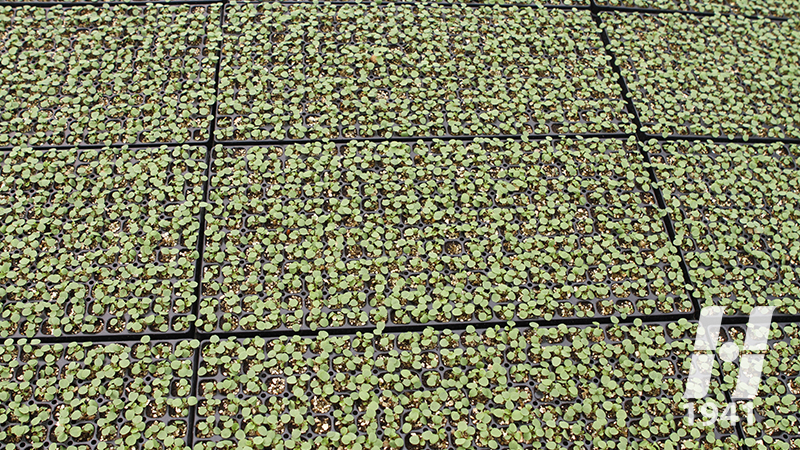The Fight Continues to Eradicate Invasive Plants

Once knotweed establishes itself, it spreads rapidly and threatens native plant communities. Here knotweed crowds out native plants to create a monoculture alongside a creek in Northern Ohio.
Photo by Allan Armitage
I thought the battles were fought and the war was over, but I am no longer sure. Let’s first take a look back. Many North American native plant nurseries were in business in the 60s and 70s. They usually sold the species themselves, with a few varieties thrown in. The fact that we live on a continent with such diverse flora made it relatively easy to fill a catalog.
In the late 80s and 90s, the nascent native plant movement awakened; domestic selections were in demand, not just by native plant enthusiasts, but also by landscapers and gardeners.
This development gathered so much momentum that large breeders discovered it. By the early 2000s, dozens of nativars became available. The industry realized that to mainstream and market this new group of plants, nativars were essential. The race was on — everyone was in the native plant game.
From the perspective of the native plant purists, this expansion was not particularly popular. However, most native enthusiasts came to understand that the plant species were simply not colorful, eye-catching, or sexy enough to be successful in the landscape/garden trade. But no one wanted to eliminate something good while trying to get rid of the bad, so non-natives like Euphorbia, Dianthus, Spiraea, Rosa, and Hydrangea continued to be hybridized and remained equally important to garden centers, gardeners, and landscapers. A truce between natives, nativars, and exotics settled in and remains in place today.
Way Beyond Non-natives
However, there is one issue that keeps poking into this peaceful coexistence. It is becoming almost as prevalent a concern as deer, and I see it being discussed more. The issue is with invasives.
Perhaps you are tired of hearing about this and still believe it is an isolated tree-hugger obsession, or a problem that has little to do with the ornamental plants we sell. Not so!
Whenever an invasive is discussed on the radio, in the paper, or on a podcast, minds immediately blame our industry for the problem.
As purple loosestrife (Lyrthrum salicaria) chokes our waterways, and garlic mustard (Alliaria petiolata) displaces spring ephemerals from thousands of acres of woodland, and as kudzu eats its way north, even non-gardeners are starting to pay attention.
Perhaps we aren’t responsible for kudzu, but that’s not the case for Chinese wisteria, multiflora rose, Bradford pears, English ivy, bamboo, yellow flag iris, or miscanthus grass, all of which we have sold and now appear on invasive plant lists in multiple states. The more invasives are introduced, the more the cry for only native plants will be heard.
A Case History: Be Afraid; Be Very Afraid
I am not sure how many of you use or sell Japanese knotweed. Like bamboo, it has a reputation for wandering but is even more insidious. It also has been sold for decades. An excellent article by Mr. Henry Grabar, “Oh, No, Not Knotweed!,” covers this subject on Slate.com. I mention this as an example of what can happen when we knowingly, or unknowingly, distribute such plants. Here are some excerpts.
“Knotweed (Reynoutria japonica, often sold as Fallopia japonica) is almost impossible to eradicate. Once established, it self-propagates by underground stems and can soon create an ecological disaster. Potential barriers like walls and roads are no obstacle because knotweed roots can stretch as far as 70 feet from the nearest stem.
“Roundup is thought to kill everything it touches, but not knotweed. Its invasive prowess has been known for some time. In 2004, intrepid knotweed fighters in Oregon injected glyphosate into 28,000 knotweed stems: it didn’t work. At least 200 acres of parkland in New York City have been taken over by knotweed, and in the U.K. it has been a crime to plant knotweed since 1990. The U.K. made knotweed disclosure mandatory on all deeds of sale. Any knotweed growing within 7 meters of a property is ‘unacceptable security,’ and banks likely will not approve a mortgage. Such concerns are also apparent in this country. In 2014, property owners in New York sued the owners of a shopping center because knotweed was thriving on the commercial site, undermining the value of their neighboring property. They won $535,000 in damages.
“Knotweed still has a relatively low profile in North America; however, in a 2009 study, knotweed had colonized several Northeastern states, the spine of the Appalachians, the Great Lakes states, and the Pacific Northwest. Kudzu pales by comparison. This is scary stuff.”
Such invaders are becoming more common in plant conversations in this country, and with each mention our industry is diminished. We must take invasives seriously. We must not sell them and certainly not use them. Made in America is all well and good, but this is not an expression our industry should be forced to embrace when it comes to invasives.









